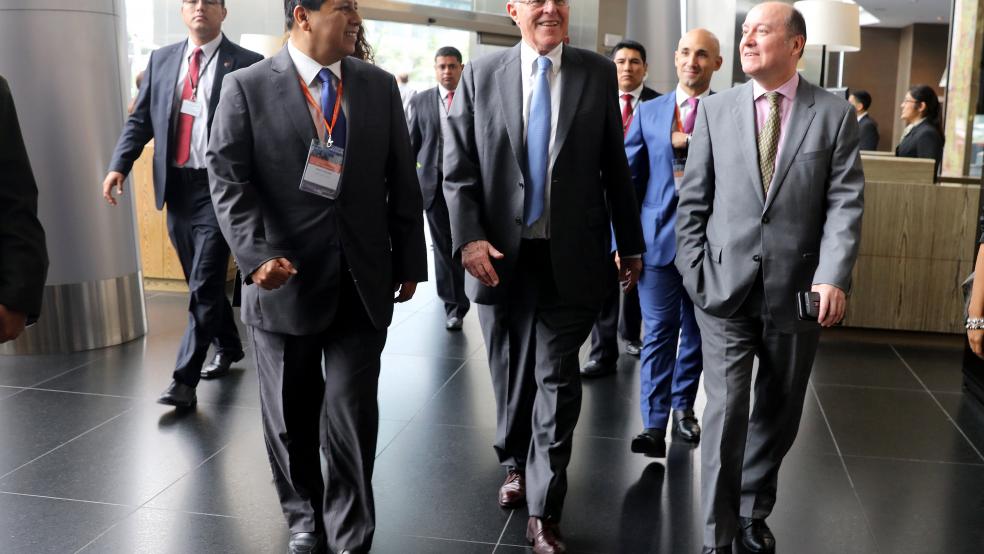LIMA (Reuters) - Peru will work to boost the liquidity of sol-denominated debt instruments as it takes a break from global debt markets and pivots to local bond issuances, the country's finance minister told Reuters on Thursday.
In an interview following Peru's sale of a 10.25 billion sol ($3.02 billion) bond in a debt swap transaction, Alfredo Thorne said Peru would not likely issue fresh bonds abroad in what remains of 2016.Instead, the government will focus on bolstering demand in local markets by increasing the role of market makers, concentrating sovereign bonds into fewer maturities and allowing foreign investors to buy its treasury notes, Thorne said."Investors are worried because there isn't much liquidity in the local market," Thorne told Reuters. "We want it to be as liquid as dollar bonds so investors can move between one market and the other freely."Thursday's bond sale was the first during the government of President Pedro Pablo Kuczynski and one of the biggest global issuances of a bond denominated in an emerging market currency, the finance ministry said in a statement.The issuance allowed Peru to extend the average maturity of its bonds and trim its share of its dollarized debt to 50 percent ahead of possible hikes to U.S. interest rates that could make payments more expensive, Thorne said.Some $700 million in dollar bonds were exchanged in the transaction and nearly 70 percent of all of the bonds swapped had been set to expire next year, Thorne said."Demand was enormous. Books reached 24 billion soles" or more than twice the final sale, allowing Peru to secure a 6.375 percent yield, Thorne said.The ideal mix of Peruvian debt in soles versus dollars will depend on risks at home and abroad and opportunities to lock in cheaper rates, Thorne said."If we see that the global outlook deteriorates because the Federal Reserve raises interest rates, it'll probably be better to have more in soles and less in dollars," Thorne said.Peru will also be watching the outcome of the U.S. presidential election and risks to global growth, Thorne added."We want to take a break and look at the international situation," Thorne said. "We're going to be more active in issuing in the local market... if any foreign investor was left wanting to buy our debt they can look at the local market." ($1=3.399 soles) (Reporting By Mitra Taj and Teresa Cespedes; Editing by Bill Rigby)Peru to boost liquidity of sol debt after global bond sale: finance minister

Mariana Bazo



